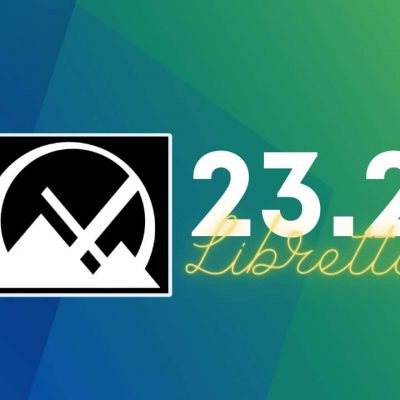將 Vim 設置為 Rust IDE

Rust 語言旨在以 C++ 開發人員熟悉的方式實現具有安全並發性和高內存性能的系統編程。它也是 Stack Overflow 的 2019 年開發人員調查中最受歡迎的編程語言之一。
文本編輯器和集成開發環境(IDE)工具使編寫 Rust 代碼更加輕鬆快捷。有很多編輯器可供選擇,但是我相信 Vim 編輯器非常適合作為 Rust IDE。在本文中,我將說明如何為 Rust 應用開發設置 Vim。
安裝 Vim
Vim 是 Linux 和 Unix 中最常用的命令行文本編輯器之一。最新版本(在編寫本文時)是 8.2,它在使用方式上提供了前所未有的靈活性。
Vim 的下載頁面提供了多種二進位或軟體包形式安裝。例如,如果使用 macOS,那麼可以安裝 MacVim 項目,然後通過安裝 Vim 插件 擴展 Vim 的功能。
要設置 Rust 進行開發,請下載 Rustup,這是一個方便的 Rust 安裝器工具,並在你的終端上運行以下命令(如果你使用 macOS、Linux 或任何其他類 Unix 系統):
$ curl --proto '=https' --tlsv1.2 -sSf https://sh.rustup.rs | sh
在提示中選擇安裝選項。然後,你將看到如下輸出:
stable installed - rustc 1.43.1 (8d69840ab 2020-05-04)
Rust is installed now. Great!
To get started you need Cargo's bin directory ($HOME/.cargo/bin) in your PATH
environment variable. Next time you log in this will be done
automatically.
To configure your current shell run source $HOME/.cargo/env
語法高亮
Vim 能讓你通過 .vimrc 文件配置你的運行時環境。要啟用語法高亮,請打開 .vimrc 文件(如果不存在就創建一個):
$ vim ~/.vimrc
在 .vimrc 中添加以下內容並保存:
filetype plugin indent on
syntax on
第一行同時打開檢測、插件和縮進配置。第二行啟用語法高亮。這些功能將幫助你在 Rust 中管理開發流程。在 Vim 的幫助文件中了解更多信息。
在 Vim 中創建一個 Rust 應用
要使用 Vim 創建一個新的 Rust HelloWorld 應用(hello.rs),請輸入:
$ vim hello.rs
輸入以下 Rust 代碼在控制台中列印 Hello World!:
fn main() {
println!("Hello World");
}
它看起來應該像這樣:

沒有語法高亮的樣子如下:

你是否注意到 Vim 自動縮進和組織代碼?那是因為你在 .vimrc 文件中輸入了第一行。
很好!接下來,你將使用 Rust 的包管理器 Cargo 構建此應用。
Cargo 集成
Cargo 使創建應用更加容易。要查看操作方法,請創建一個基於 Cargo 的 HelloWorld 應用。如果你尚未在 Linux 或 macOS 系統上安裝 Cargo,請輸入:
$ curl https://sh.rustup.rs -sSf | sh
然後使用 Cargo 創建包:
$ cargo new my_hello_world
如果查看目錄結構,你會看到 Cargo 自動生成一些源碼和目錄。如果你安裝了 tree,請運行它查看目錄結構:
$ tree my_hello_world
my_hello_world
├── Cargo.toml
└── src
└── main.rs
1 directory, 2 files
在 Vim 中打開 main.rs 源碼文件:
$ vim my_hello_world/src/main.rs
它與你在上面手動創建的 HelloWorld 示例中的代碼相同。用 Rust with Vim 代替 World:
fn main() {
println!("Hello, Rust with Vim");
}
使用 :wq 保存更改並退出 Vim。
編譯你的應用
現在你可以使用 cargo build 編譯你的第一個 Rust 應用:
$ cd my_hello_world
$ cargo build
你的終端輸出將類似於以下內容:
Compiling my_hello_world v0.1.0 (/Users/danieloh/cloud-native-app-dev/rust/my_hello_world)
Finished dev [unoptimized + debuginfo] target(s) in 0.60s
你可能會看到一條警告消息,因為你重用了示例包名 my_hello_world,但現在可以忽略它。
運行應用:
$ target/debug/my_hello_world
Hello, Rust with Vim!
你也可以使用 cargo run 一次構建和運行應用:
$ cargo run
Finished dev [unoptimized + debuginfo] target(s) in 0.00s
Running `target/debug/my_hello_world`
Hello, Rust with Vim!!
恭喜!你在本地的 Vim 編輯器中設置了 Rust IDE,開發了第一個 Rust 應用,並使用 Cargo 包管理器工具構建、測試和運行了它。如果你想學習其他 Cargo 命令,請運行 cargo help。
via: https://opensource.com/article/20/7/vim-rust-ide
作者:Daniel Oh 選題:lujun9972 譯者:geekpi 校對:wxy
本文轉載來自 Linux 中國: https://github.com/Linux-CN/archive






















